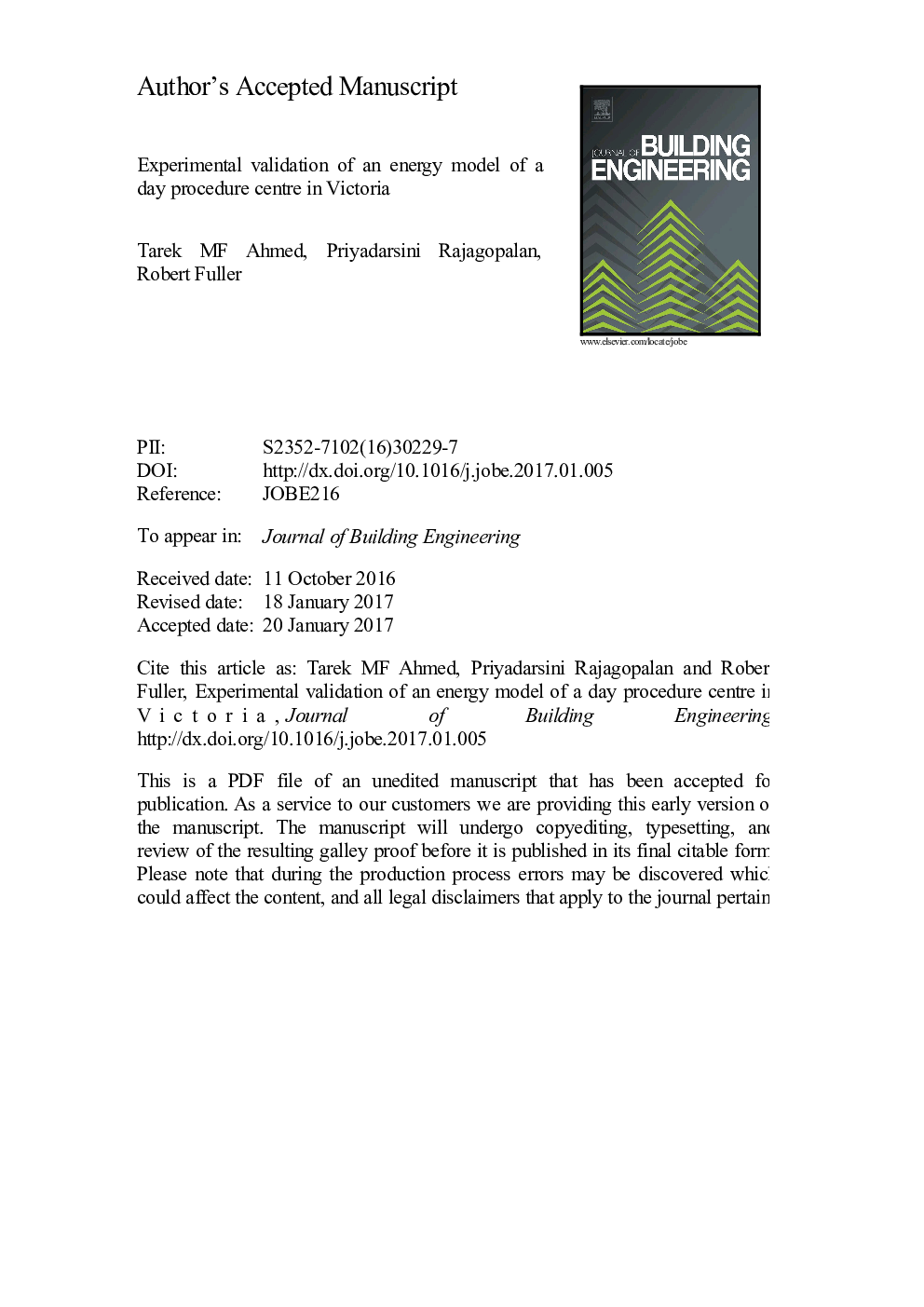| Article ID | Journal | Published Year | Pages | File Type |
|---|---|---|---|---|
| 4923087 | Journal of Building Engineering | 2017 | 38 Pages |
Abstract
The healthcare sector encompasses a wide range of hospitals and healthcare facilities. As a result of their various sizes and functions, they have different patterns of energy consumption. The number of day surgery/procedure centres is steadily increasing in Australia. With advances in technology, almost eighty per cent of the number of operations that used to be performed in acute care facilities are now done on an outpatient basis, that is, day surgery. It is necessary to provide realistic energy performance benchmarks that are attainable for each typology within this sector. Building performance simulation (BPS) is a powerful and efficient tool to achieve this target. A first step to establish a simulation-based energy benchmarks is to create an accurate simulation model. Validation of the model will ensure it matches the actual building performance. This paper details a method of developing the building energy simulation model for an existing free-standing day surgery/procedure centre that is located within the campus of the main general hospital in Geelong, Australia. In the second part of this paper, simulation runs are performed and investigates the model potential and energy consumption repercussions as a result of tuning certain input parameters. In the case study building, the energy used for electricity, heating, cooling and air conditioning is supplied from various sources. For this reason, this paper uses data gathered from various resources: energy audits, short-term monitoring, and reviews on energy consumption in different typologies and heat transfer formulas to estimate the total energy consumption of the building and establish an accurate simulation model in the absence of whole energy consumption data. Results show a good agreement between the breakdown of the annual energy consumption of the actual building and the energy model. Analysis was conducted using the validated model on some parameters that were found to be inefficient during the building assessment to investigate their impact on the energy performance and indoor environmental quality.
Related Topics
Physical Sciences and Engineering
Engineering
Civil and Structural Engineering
Authors
Tarek M.F. Ahmed, Priyadarsini Rajagopalan, Robert Fuller,
